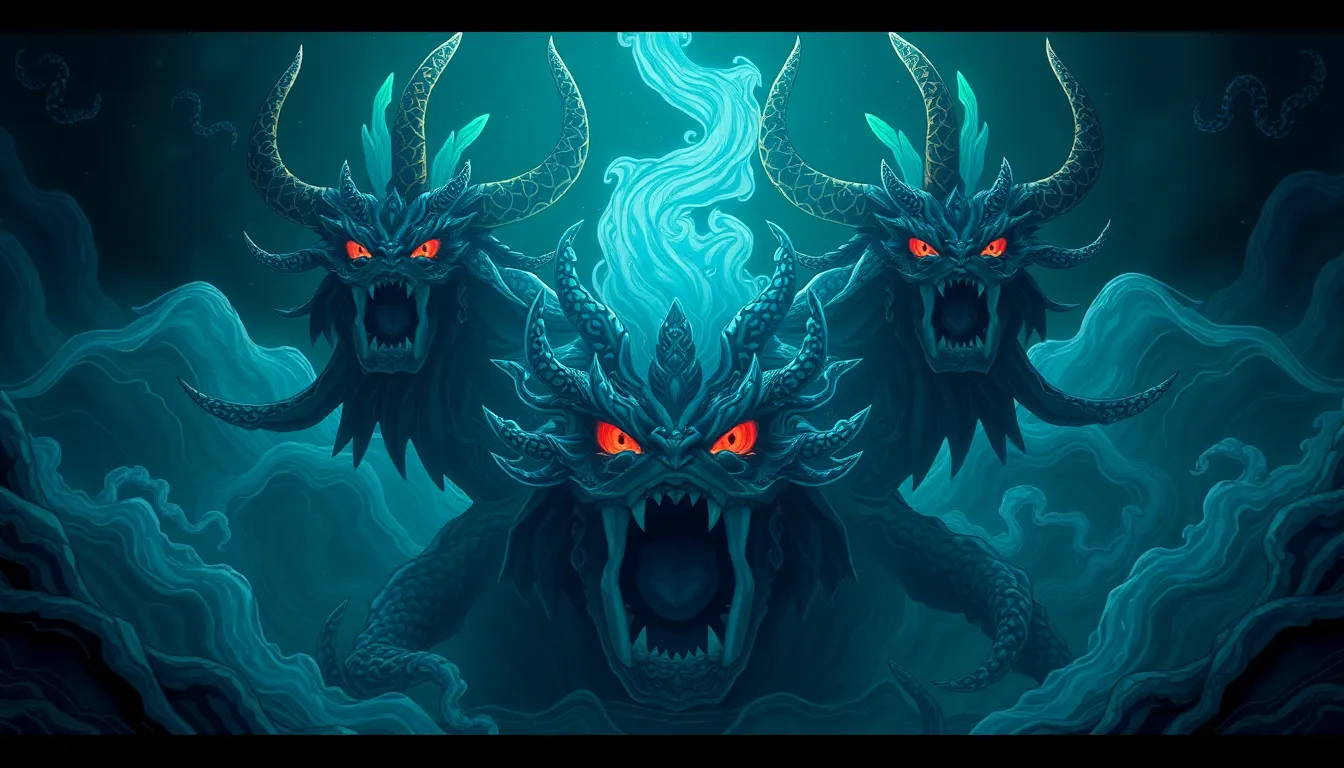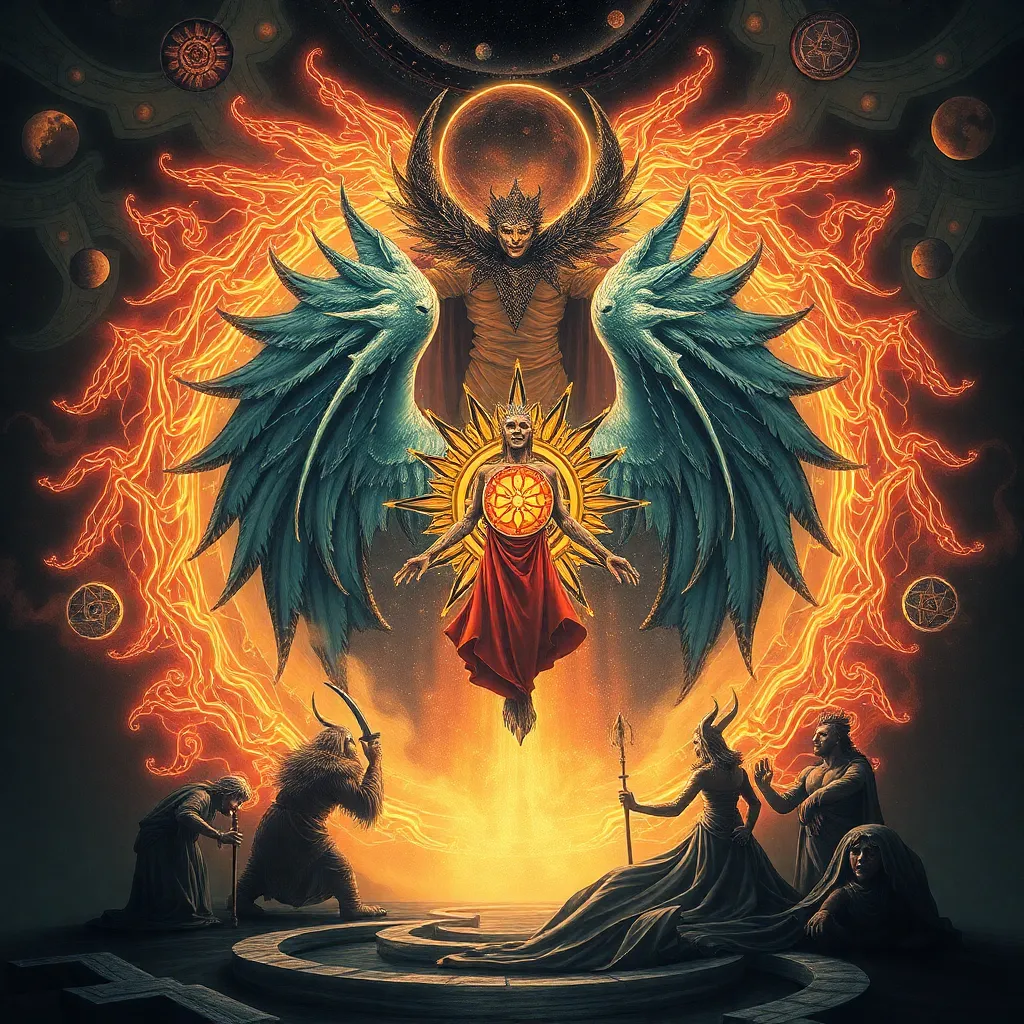Guardians of the Deep: Aquatic Yokai of Japanese Mythology
I. Introduction to Aquatic Yokai
In Japanese culture, the term “yokai” refers to a class of supernatural entities that can range from mischievous spirits to malevolent creatures. These beings often embody the fears, hopes, and beliefs of the people, making them an integral part of Japanese folklore.
Aquatic themes hold a significant place in Japanese mythology, given the country’s extensive coastlines, rivers, and lakes. Water is seen not only as a source of life but also as a boundary between the physical world and the spiritual realm. This article focuses on aquatic yokai, exploring their origins, characteristics, and representations in various cultural forms.
II. Historical Context of Aquatic Yokai
The origins of yokai can be traced back to ancient Japanese folklore, where they were often associated with natural phenomena and the environment. Water, being a vital resource for agriculture and daily living, has been revered and feared, leading to the creation of various aquatic yokai that embody these dualities.
Throughout Japanese history, the role of water has evolved, influencing spirituality and daily life. The belief in spirits residing in rivers and oceans has been a common theme, resulting in stories that reflect both reverence for and fear of these bodies of water. Aquatic yokai have developed through different historical periods, adapting to societal changes and environmental shifts.
III. Notable Aquatic Yokai
Several aquatic yokai stand out in Japanese mythology, each with unique traits and stories:
- Funayūrei – The Ghosts of Drowned Souls: These spirits are said to be the souls of those who died at sea, often appearing on ships to warn sailors or seek revenge.
- Umibōzu – The Sea Monk: A massive, dark figure that rises from the ocean, Umibōzu is known to capsize ships and is often associated with storms and disasters at sea.
- Iso-onna – The Beach Woman: This yokai appears as a beautiful woman on the shore, luring men to their doom. Once near, she reveals her true form, often described as a terrifying sea creature.
- Kappa – The River Child: A well-known yokai, Kappa are water-dwelling creatures resembling turtles, known for their mischievous behavior and love for cucumbers. They can be both helpful and harmful to humans.
IV. Characteristics and Traits of Aquatic Yokai
Aquatic yokai possess various physical descriptions and transformation abilities that contribute to their mystique:
- Physical Descriptions: Many aquatic yokai have hybrid forms, combining human and animal traits. For example, Kappa are often depicted with a beak and shell, while Iso-onna may have a beautiful upper body with a monstrous lower half.
- Behavioral Patterns: Some aquatic yokai, like Funayūrei, exhibit sorrowful behaviors, while others, like Umibōzu, are more aggressive. Their actions often reflect the emotions tied to water and human interactions with it.
- Symbolism: Aquatic yokai symbolize the unpredictable nature of water, representing both its nurturing and destructive qualities. They serve as reminders of the respect humans must show towards natural elements.
V. Cultural Representations of Aquatic Yokai
Aquatic yokai have been portrayed in various cultural mediums throughout history:
- Literature and Art: Traditional woodblock prints and stories from the Edo period often depicted aquatic yokai, capturing their essence and the atmosphere of water-related folklore.
- Modern Media: Anime, manga, and films continue to explore the themes of aquatic yokai, bringing them into contemporary storytelling. Series like “Kappa no Kaikata” and “Natsume’s Book of Friends” feature these creatures prominently.
- Festivals and Rituals: Festivals like the Kappa Matsuri celebrate these water spirits, reflecting a deep-rooted cultural connection and the ongoing reverence for aquatic yokai.
VI. Aquatic Yokai in Contemporary Society
In recent years, there has been a revival of interest in traditional folklore, particularly aquatic yokai:
- Folklore Revivals: Modern storytelling and art have embraced these ancestral tales, reflecting a desire to connect with cultural roots.
- Tourism and Merchandise: Aquatic yokai have become popular symbols in tourism, with merchandise featuring their likenesses appealing to both locals and visitors.
- Environmental Themes: Many stories of aquatic yokai incorporate themes of environmental awareness, highlighting the fragility of ecosystems and the need for conservation.
VII. Comparative Analysis with Other Mythologies
When comparing aquatic yokai to similar beings in other cultures, several interesting parallels and distinctions arise:
- Similarities: Many cultures have water spirits or deities, such as the Nuckelavee in Scottish folklore or the mermaids in Western mythology, that share traits of beauty and danger.
- Unique Aspects: Japanese aquatic yokai often embody a blend of human emotion and natural phenomenon, resulting in a more nuanced representation than some Western counterparts.
- Global Influence: The fascination with Japanese mythology has spread worldwide, influencing storytelling and artistic expression in various cultures.
VIII. Conclusion
Aquatic yokai represent a captivating aspect of Japanese folklore, embodying the complex relationship between humans and the natural world. Their stories reflect cultural values and historical contexts, serving as a bridge between past and present.
The ongoing fascination with these figures highlights the importance of preserving and exploring Japan’s rich folklore. By understanding and appreciating aquatic yokai, we can gain insight into the cultural heritage that continues to influence modern society.
As we delve deeper into these legends, we not only honor the past but also enrich our understanding of humanity’s connection to the environment.



